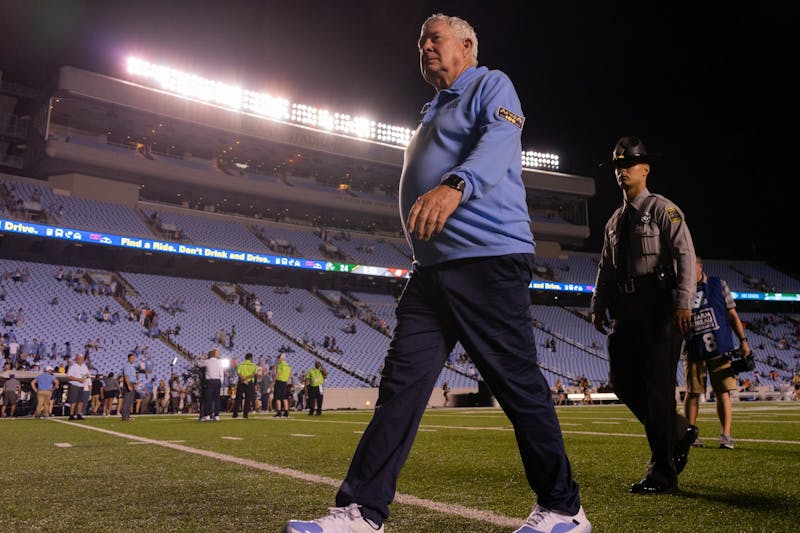
Football continues to be a driving force behind the reorganization of college athletics conferences, thanks to the power of huge television deals.
Rumors of a split between Tar Heel and ACC circulate with every new move as the SEC and Big Ten look to expand their horizons. However, potential moves come with drawbacks.
North Carolina has not changed conferences since 1953 when the school left the Southern Conference to join the newly formed ACC. At the time, UNC did not offer college sports for women, and there were only 12 college sports in all.
Today, UNC boasts 28 varsity sports, but how can the football program be adequately funded to remain competitive while leaving room for schools to fund other sports? The question arises whether.
According to UNC’s latest financial report for 2020-21, soccer revenue was $44.4 million, while the men’s basketball program was just $13.4 million.
For the fiscal year ending June 2020, both the Big Ten and the SEC reported figures in excess of $700 million. During the same period, ACC generated approximately $500 million in revenue.
“This is happening within the NCAA. The move is largely about the collectiveizing of elite broadcast rights,” said Simon Hoskins, USA Field Hockey’s executive director. “You obviously want to be at the conference with the best funding and the best resources.”
One example can be seen in the case of future Big Ten member UCLA. Due to the impact of COVID-19, the program has reduced participation in football and lack of income from other sports, UCLA would have had to cut its national team if it hadn’t switched conferences.
The national team could find themselves in a similar situation if UNC does not act on its own. But despite the lucrative potential of moving to the SEC and Big Ten, the changes to the conference will have a major impact on Olympic sport.
“Financially there is a gap and we are doing everything we can to close that gap,” said UNC Athletics Director Bubba Cunningham in an interview with the Carolina Insider Podcast produced by UNC. “I think it will be a challenge for me to incorporate some of these new schools into the new league. [the Big Ten and SEC].”
One reason the SEC and Big Ten are attracted to UNC is a new TV deal with ESPN.Each SEC school has approximately $68 million, ESPN will only pay ACC schools $17 million. Big Ten’s new deal could see the school profit more than $70 million after UCLA and USC complete their transition to conferences.
Some, but not all, Tar Heel athletes may also see increased income from movement.
Using soccer players and men’s basketball players as metrics, the SEC has the highest average name, image and likeness valuation per athlete in the nation at $52,806.54, according to college sports website On3. Big Ten is $32,717.16 and he is in third place. ACC currently ranks last among the Power 5 conferences at $28,448.83 per athlete.
Although the Big Ten are responsible for most of UNC’s Olympic sports, the SEC does not sponsor sports in which UNC has a deep history, such as men’s and women’s lacrosse, field hockey, or men’s soccer.
Former UNC women’s lacrosse goalkeeper Taylor Moreno said, “I think it’s going to be difficult in terms of moving the meeting. I hope UNC is smart enough not to do it.” “I think[moving the conference]would benefit football and basketball, but it would certainly hurt a good number of the Olympic sports, especially the women’s side,” she said.
Playing in the ACC also offers the opportunity to play in long-running rivalries with other North Carolina schools, such as Duke, North Carolina State and Wake Forest, that may not be attractive to other conferences.
Robert Schenck, former assistant coach of UNC field hockey, said UNC’s departure from the ACC would take the history of those rivalries.
“Who wouldn’t be excited to see a UNC-Duke match in any sport? It would be devastating,” Schenk said. It’s hard to get rid of rivalries for money.”
Additionally, travel to away games is significantly increased. The majority of the ACC team is located along the East Coast, but expanded conferences have programs as far west as Norman, Oklahoma and Los Angeles.
Former UNC women’s lacrosse defender Caroline Wakefield said travel is already hard on athletes.
“To play on Saturday, I have to fly out on Thursday. I want to get used to the change of time and where I am,” she said. “Traveling takes a toll on your body, and missing classes can be a disaster.”
If North Carolina chooses to exit the ACC, the program will likely benefit from larger TV contracts, and some players could benefit from larger NIL contracts.
Nevertheless, it is the athlete who must deal with the potential consequences of readjustment. Positive, negative, unknown.
“It looks good outwardly to move to a bigger conference because I think it will be better for your sport.” If football brings more money to the SEC, lacrosse makes more money. I don’t think you understand how it affects smaller sports.”
@dthsports | |sports@dailytarheel.com
Sign up for our email newsletter to receive the day’s news and headlines in your inbox every morning.
